A site investigation collects data that characterises the material at the dredging site and at the borrow area and the disposal site.
Site investigation data applied
The data gathered will answer questions as:
- What types of soils and material are present?
- Are these materials dredgeable?
- Are these materials suitable for reuse?
- If contaminated, will these materials require special treatment or disposal arrangements?
- What type of equipment and plant will be needed?
- What will the wear and tear on plant be?
- Is the stipulated budget feasible for the work to be carried out?
Dredged Material Characterisation
The characterisation of types of materials to be encountered in a project is made by the use of subsurface exploration, using geophysical, chemical and biological techniques in which a representative set of samples is taken throughout the potential or actual project dimensions.
Sampling
Sampling of the sub-seafloor should cover three aspects of ground examination:
- geological and geotechnical evaluations;
- bathymetric surveys; and
- environmental assessments.
Dredged material can be distributed through the water both vertically and horizontally. This means that samples are normally taken vertically to a level at least one metre below the dredging depths planned for the project.
Samples are visually observed at the time of sampling, but also should be subjected to laboratory investigation. Sampling is conducted twice:
- during the feasibility or planning phase and
- again in more detail during the design and construction phase.
The difference in the level of detail between the feasibility stage and the design stage and the need for two occasions of exploration must be emphasised to all parties involved, management and technical staff at both the client and contractor.
The costs of a two-phase site investigation, although not insignificant, are relatively minor in comparison with the overall project costs. The expense is well worth avoiding the risk of large and unpredictable cost overruns if unexpected materials are encountered during the operation.
Tests and analyses of samples
Tests and analyses are then performed on the samples to determine:
- particle size distribution,
- soil consistency/water content,
- organic content,
- settlement and consolidation characteristics,
- shear strength characteristics,
- plasticity,
- in-situ density,
- mineralogy,
- particle specific gravity,
- permeability and so on.
These data may then be supplemented with field tests such as standard penetration tests (SPT) and cone penetration tests (CPT).
Subjects
Surveying and Monitoring
-
 Adaptive or feedback monitoring
Adaptive or feedback monitoring
-
 Compliance Monitoring
Compliance Monitoring
-
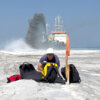 Contractual Monitoring
Contractual Monitoring
-
 Environmental Monitoring Programmes
Environmental Monitoring Programmes
-
 Geological and Geotechnical Data
Geological and Geotechnical Data
-
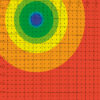 Hydraulic Data
Hydraulic Data
-
 Monitoring
Monitoring
-
 Monitoring Equipment
Monitoring Equipment
-
 Morphological and Environmental data
Morphological and Environmental data
-
 Navigable Depth
Navigable Depth
-
 Site Investigation
Site Investigation
-
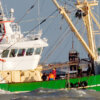 Surveillance or BACI monitoring
Surveillance or BACI monitoring
-
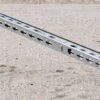 Surveying
Surveying
related
Articles
Applying early contractor involvement in marine infrastructure procurement

Complex construction projects that use traditional procurement practices are often impacted by significant cost overruns and delays. Early contractor involvement (ECI) is a concept that strives to involve the contractor collaboratively at an early stage of a project’s development to mitigate or otherwise eliminate those risks. In August 2022, PIANC published the report “A framework for early contractor involvement in infrastructure projects” to help industry practitioners in choosing and best implementing ECI. This article is intended to develop on key aspects of the PIANC report and look at the factors that can lead to a successful maritime ECI project.
The Fehmarnbelt tunnel trench dredging project

A fixed and direct transport connection between Scandinavia and Central Europe has been an enduring vision for many decades. This vision is about to be realised with the construction of the Fehmarnbelt Fixed Link, an 18-kilometre-long immersed tunnel between Rødbyhavn in Denmark and Puttgarden in Germany. When it opens in 2029, the tunnel will be the longest immersed tunnel in the world combining a dual railway and motorway connection. This article provides insight into the improved dredging equipment used and the methodology specially adapted and further developed to the project’s requirements.
50 years of case law that transformed marine infrastructure contracts

This article reviews various court cases over the past 50 years and considers their influence on marine infrastructure contracts and the allocation of risk between contract parties. The establishment of case law and legal precedent is an ever-evolving process, it being dependent on claimants to put their disputes through the court process to seek the outcome they desire. It is often a long and costly process. The rise of adjudication in various common law jurisdictions and countries means that often disputes are resolved without recourse to the courts and various industry standard contracts have arbitration as the final and binding mechanism to resolve disputes.
Study of greenhouse gas emissions during ripening of dredged marine sediment

As increasing greenhouse gas (GHG) emissions contribute to global warming, it is becoming more important to consider the carbon footprint of hydraulic engineering projects. This carbon footprint is more complex than previously thought however, as it can also include the carbon dynamics of the sediments from which projects are built. The purpose of this study was to provide a first approximation from sediment-related GHG emissions of dredged sediments. Using the case study of the clay ripening pilot project (‘Kleirijperij’) in Groningen, the Netherlands, one phase of sediment processing was examined: the ripening of dredged sediments for use as a clay material in dyke construction.
Balancing project progress and limited system knowledge in Amatique Bay

The development of a new marine project demands a system approach in which all aspects, including technical, economic, environmental and social, are considered and integrated equally and at an early stage. While insufficient information may be available to make informed decisions, choices need to be made to progress a project, assess impacts and risks, and engage stakeholders. This article explores the case of a new port terminal in Amatique Bay, Guatemala. A method was developed to assess, at an early stage, the potential negative impacts on seagrass habitats from the disposal of dredged material at different locations, while having limited real-time and location-specific information at hand.
Adverse physical conditions: Legal development and changes in risk profiles

In the past decade, there have been noteworthy advances in case law with respect to adverse physical conditions as well as the development and use of digital ground models that have become more widespread. This article looks at the development and changes in risk profiles that may result due to these two developments.
Creating mangrove habitat for shoreline protection

Over the past decades, there has been a growing interest in exploring innovative ways to minimise the environmental footprint of coastal developments and in nature-based approaches for shoreline protection. At Mubarraz Island near Abu Dhabi (UAE), an international oil company beneficially reused ~12 million m³ of dredged material to protect pipelines, construct a causeway and create mangrove habitat to manage coastal erosion. This ‘Working with Nature’ approach has provided a cost-effective nature-based solution for shoreline protection, with added benefits for biodiversity conservation.
LIFE MARINAPLAN PLUS Project: Sustainable marine and coastal seabed management
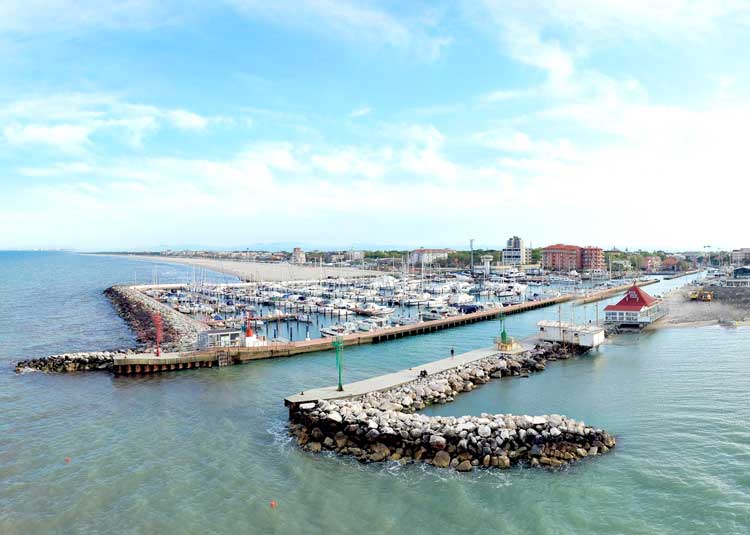
In June 2019, the research team of the LIFE MARINAPLAN PLUS project began operating the first-of-a-kind demonstration plant installation at the harbour entrance of Marina di Cervia (Italy). Fulfilling the project’s objective to apply at industrial scale a reliable technology for the sustainable management of sediment in marine infrastructures, this technology prevents harbour silting through the use of submerged devices called ‘ejectors’ installed on the seabed.
Assessing and evaluating environmental turbidity limits for dredging

Dredging is essential for the maintenance and development of ports, harbours and waterways to allow for safe navigation, remediation and flood management. The process, which relocates large volumes of sediment, can be accompanied by the release of suspended sediments into the water column referred to as sediment plumes.
Videos
Presentation: ‘Sand as a Resource’ by Jan Fordeyn (Jan De Nul) − Director Project Development & Conceptual Design

In our day to day lives most of us are not aware of how many industries rely on sand as a part of their working process. The amount of sand consumed has dramatically increased over the last few years and this can be largely contributed to the world wide construction boom. How is this going to affect us in the future?











